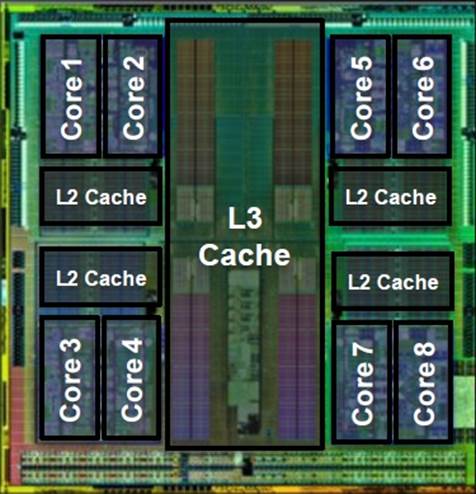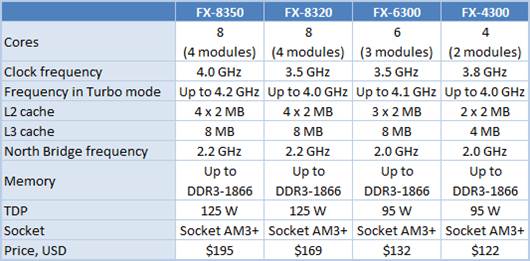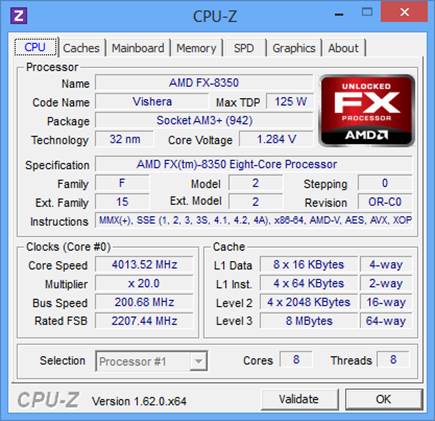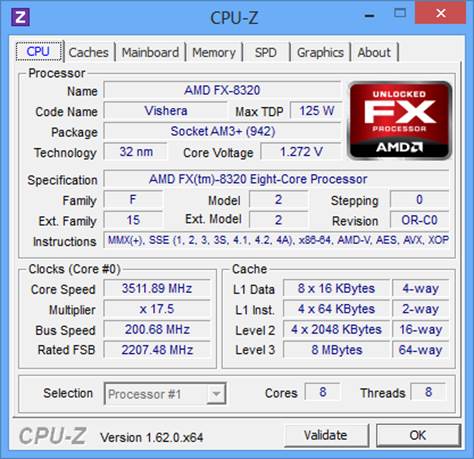The introduction of AM3+ Socket with
Piledrive board structure inspired AMD fans. However, lately, we have relied on
the opinions about observing results from hi-end models in the new AMD FX
series. We are inclined to fill this gap and carry out a research about detailed
performance of all eight-core, six-core and four-core Vishera processors.
Through years, desktop processor’s rank in
the market has fallen. From the start, shortage of innovative forced the
company to lower the price of their processors more, thus, at some point they
completely left the hi-price segment including hi-performance processors. After
that, they started an epic failure, when new processors on Bulldozer microarchitecture
appeared, which used to be people’s hope. Bulldozer was expected to become one
product rivaling top Intel LGA 1155 and LGA 2011CPUs, but in fact the new
microarchitecture turns out slow and energy-consuming. As a result, Bulldozer
became a niche product, likely having at least some resistance against the common
Intel processors because the number of physical cores was doubled. Furthermore,
the performance could only be observed through multi-threaded load and only when
we ignored the great power consumption. In other words, the release of
Bulldozer didn’t really help AMD strengthen their rank in the desktop processor
market.

AMD
FX-8350 Vishera 8-Core CPU
Fortunately, a series of market failures has
combined with management issues, hard financial situation, layoffs and search
for new strategies didn’t stop the company’s engineers, and a year after
Bulldozer’s launch we greeted a second advanced version of this
microarchitecture namned Piledriver. Our review of the top processor of
Vishera desktop series, FX-8350, showed that they didn’t waste last twelve
months. FX-8350 managed to significantly improve the performance of AMD’s
flagship platform. The benchmark results averagely increased by 15%, which is
more than the performance boost that Intel got when moving from Sandy Bridge to
Ivy Bridge microarchitecture. Having tried to amplify the effectiveness from
their success of platform renewal, AMD decided to follow democratic pricing
policy, so that Socket AM3+ platform became more seductive than before. Vishera
processors received very warm greetings, and we absolutely had no doubts that
AMD’s offer would gain a great number of users.
Concurrently, if we dig a little deeper, we
will see that processors with Piledriver microarchitecture are not such
progressive after all. In fact, all improvements are on the surface, and the
new FX-8350’s advantage over the FX-8150 can be explained by a combination of
factors, in which the most important ones are not the micro architectural enhancements,
but the higher 400 MHz clock frequency and more effective Turbo mode. Of
course, finally the origin of performance boost is not a serious issue for the
end-users, but on the other hand, you should remember that the top Vishera
processor model’s advantage over the top Zambezi processor couldn’t be
automatically projected onto other members of responsive families. AMD tried to
push the clock frequency to the max in their FX-8350 processor, in order to
make the biggest impression on the users, but simpler and less expensive
modifications of FX processor on the new microarchitecture, may fail to provide
such remarkable performance enhancement. Especially, noting that the new FX
processor seires also includes models with smaller L3 cache.
Hence, we decided to investigate the
performance of the lower Vishera processors, which wasn’t a part of the first
review. Today we are trying to identify whether all FX processors based on
Piledriver microarchitecture can be considered a successful improvment of the series,
or if only the new FX-8350 deserves compliments.
AMD sent top Vishera FX-8350 processor for
the reviews about the new Socket AM3+ platform on Piledriver microarchitecture.
However, the series actually includes four processor models: FX-8350 mentioned above
and slower modifications with lower clock frequencies featuring eight, six and
four physical cores. They are similar in some ways: according to the long-time
tradition, AMD sticks to unity within their product lines and uses a unified semiconductor
die in their Vishera processors. It incorporates four dual-core modules and an
8MB L3 cache. This semiconductor Vishera die includes 1.2 billion transistors
and is 315 square-millimeters large.

A
four dual-core modules and an 8MB L3 cache
Though, the junior processors models do not
use this entire die. The manufacturer may inactivate one or two dual-core
modules, or remove some of the L3 cache memory. On one hand, this allows creating
a diversified product line, and on the other hand, the manufacturer has chance
of taking usage of partially defective dies. AMD varied the number of active
dual-core modules in their previous generation Zambezi processors, which
created six-core FX-6000 and quad-core FX-4000 models. The differentiation in
Vishera series has become more distinctive: they also began to take off half of
the L3 cache memory. As a result, AMD FX processors series on the new
Piledriver microarchitecture looks as follows:

Technical
specs comparison
Let’s take a closer look at members of this
product line:
AMD FX-8350

AMD
FX-8350
We had a discussion about this top Vishera
processor in a single review. However, I would like to remind you that it
represents the most feature-rich variant of a Socket AM3+ processor released. It
means that FX-8350 has 8 pairs of cores and 8MB L3 cache. It nominal clock
frequency was set at 4.9GH, thus the manufacturer has the right to say that this
is the first desktop processor that has reached 4GHz.
AMD believes that FX-8350 is a direct rival
of Intel Core i5-3570K, but in my opinion, this is a too positive comment. Though,
its RRP is %195, hence, making it comparable to slower Core i5 models based on
Ivy Bridge micro-architecture. Of course, the new AMD processor seems more
confident than these proucts.
Unluckily, we didn’t know how fast AMD were
planning to increase the Vishera’s speed. Seemingly, FX-850 will be a top
product for a time, especially, because they delayed the launch of the next looping
micro-architectural algorithm, called Steamroller, until 2014.
AMD FX-8350
·
Number of cores: 8 (4 modules)
·
Clock frequency: 4.0GHz
·
Clock frequency in Turbo mode: max. 4.2GHz
·
L2 cache: 4x 2MB
·
L3 cache: 8MB
·
North Bridge frequency: 2.2GHz
·
Memory: max. DDR3-1866
·
TDP: 125W
·
Socket: Socket AM3+
·
RRP: $195
AMD FX-8320

AMD
FX-8320
Obviously, not all of Vishera semiconductor
dies can work at 4.0GHz frequency and maximum 125W TDP because they are not
manufactured by the most innovative 32nm process. Thus, the first top eight-core
processor in AMD product line also comes with a slower variant – FX-8320
featuring similar peculiarities, but slower clock frequency. In other words, this
processor, like its sibling, FX-8320, has 8 pairs of core and 1 8MB L3 cache,
yet works at the nominal 3.5GHz frequency, 500GHz lower than that top
processor. This processor can only be boosted to the expected 4GHz when
overclocked, using Turbo Core. However, TDP of the slower Vishera processor is
still at 125W.
AMD FX-8320
·
Number of cores: 8 (4 modules)
·
Clock frequency: 3.5GHz
·
Clock frequency in Turbo mode: max. 4.0GHz
·
L2 cache: 4x 2MB
·
L3 cache: 8MB
·
North Bridge frequency: 2.2GHz
·
Memory: max. DDR3-1866
·
TDP: 125W
·
Socket: Socket AM3+
·
RRP: $169